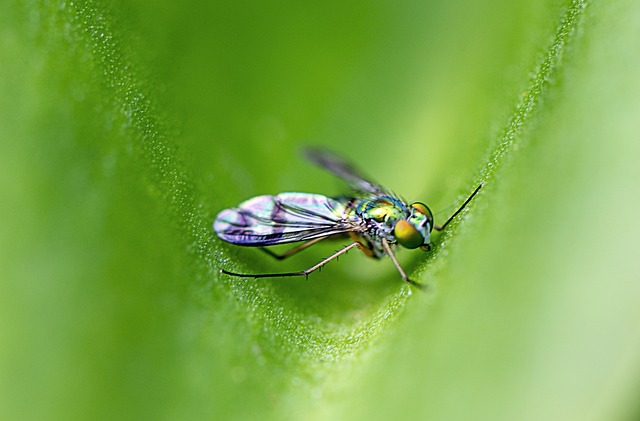Stinging insects like bees and hornets, while vital to the ecosystem, can cause problems when they nest near homes or businesses. Professional stinging pest control services use eco-friendly methods for humane removal, minimizing disruption to the ecosystem and preserving these beneficial insects. Services cater to both residential and commercial needs, offering same-day responses, long-term solutions, and advanced strategies that adhere to safety guidelines and local regulations. Preventing reoccurrence is key, with specialists sealing entry points, eliminating nesting sites, and conducting regular inspections.
In many homes and businesses, the presence of bees and stinging insects can cause alarm and distress. However, their humane and ethical removal is crucial to both human safety and environmental conservation. This article explores comprehensive strategies for managing these pests, from understanding their behavior and habitat to implementing safe removal techniques and professional stinging pest control services. We also delve into post-removal care and management strategies to prevent reoccurrence, ensuring a balanced approach to bee and hornet control, including effective residential and commercial stinging insect extermination.
Understanding Stinging Insects: Behavior and Habitat
Stinging insects, such as bees and hornets, play a vital role in our ecosystem by pollinating plants and maintaining biodiversity. However, when they establish nests near residential or commercial properties, their presence can become problematic. Understanding their behavior and habitats is crucial for effective and humane removal.
Bees and hornets are social insects that live in colonies with a queen, workers, and drones. They build nests made of wax or paper-like material, often in hidden locations like trees, shrubs, attics, or walls. Professional wasp removal services employ specialized techniques to locate and safely exterminate these nests, ensuring minimal disruption to the environment. For residential stinging pest services, it’s important to consult experts who can provide tailored solutions while adhering to ethical practices, avoiding harmful chemicals, and preserving these beneficial insects whenever possible.
Safe and Humane Removal Techniques for Bees and Wasps
When dealing with bees and wasps, it’s crucial to employ safe and humane removal techniques to protect both humans and these important pollinators. Professional stinging pest control services often utilize specialized equipment and training to ensure minimal disruption to the ecosystem. Experts in bee and hornet control understand the unique behaviors and habitats of different species, allowing for targeted and effective extermination without causing harm to non-target organisms or damaging surrounding structures.
For residential stinging pest services, professionals offer a range of solutions tailored to specific needs. This may include trap installation, habitat modification, or, in certain cases, chemical treatments when necessary. Commercial stinging pest removal requires even more specialized strategies due to the potential risks and larger scale involved. These services aim to eliminate stinging insects humanely while adhering to local regulations and environmental considerations.
Professional Stinging Pest Control Services: What to Expect
When dealing with a stinging insect problem, particularly bees and hornets, it’s crucial to turn to professional stinging pest control services for humane and ethical solutions. These experts are trained to handle such situations safely, ensuring the well-being of both residents and the insects. Professional wasp removal services employ specialized equipment and knowledge to capture or exterminate these pests without causing harm.
Residential and commercial stinging pest control services cater to diverse needs. For residential areas, they offer same-day responses to urgent issues while providing long-term solutions to prevent reoccurrences. In commercial settings, these professionals focus on comprehensive stinging insect extermination, considering the unique challenges of larger spaces. They employ eco-friendly methods where possible and adhere to strict safety guidelines, ensuring a safe environment for everyone involved.
Preventing Reoccurence: Post-Removal Care and Management Strategies
After successfully removing bees or hornets from a property, preventing reoccurrence is paramount. Professional wasp removal services often include post-removal care strategies to ensure these stinging pests don’t return. This may involve sealing entry points and eliminating potential nesting sites around the property. Regular inspections are also crucial, especially during peak seasons when stinging insects are most active.
For residential and commercial stinging pest control services, maintaining a proactive approach is key. Pest control for stinging insects often includes routine treatments to deter new colonies from establishing. By addressing any existing issues and implementing management strategies, professional bee and hornet control specialists can effectively reduce the likelihood of future infestations, providing residents and business owners with peace of mind.
When dealing with stinging insects like bees and wasps, a well-informed approach is essential. This article has guided readers through understanding these pests, safe removal techniques, the role of professional services, and preventing reoccurrence. For residential or commercial spaces, considering reputable pest control services offering specialized bee and hornet control, as well as implementing post-removal care strategies, ensures a humane and effective solution to stinging insect extermination. These steps contribute to creating a safer environment while minimizing the impact on ecosystems.
